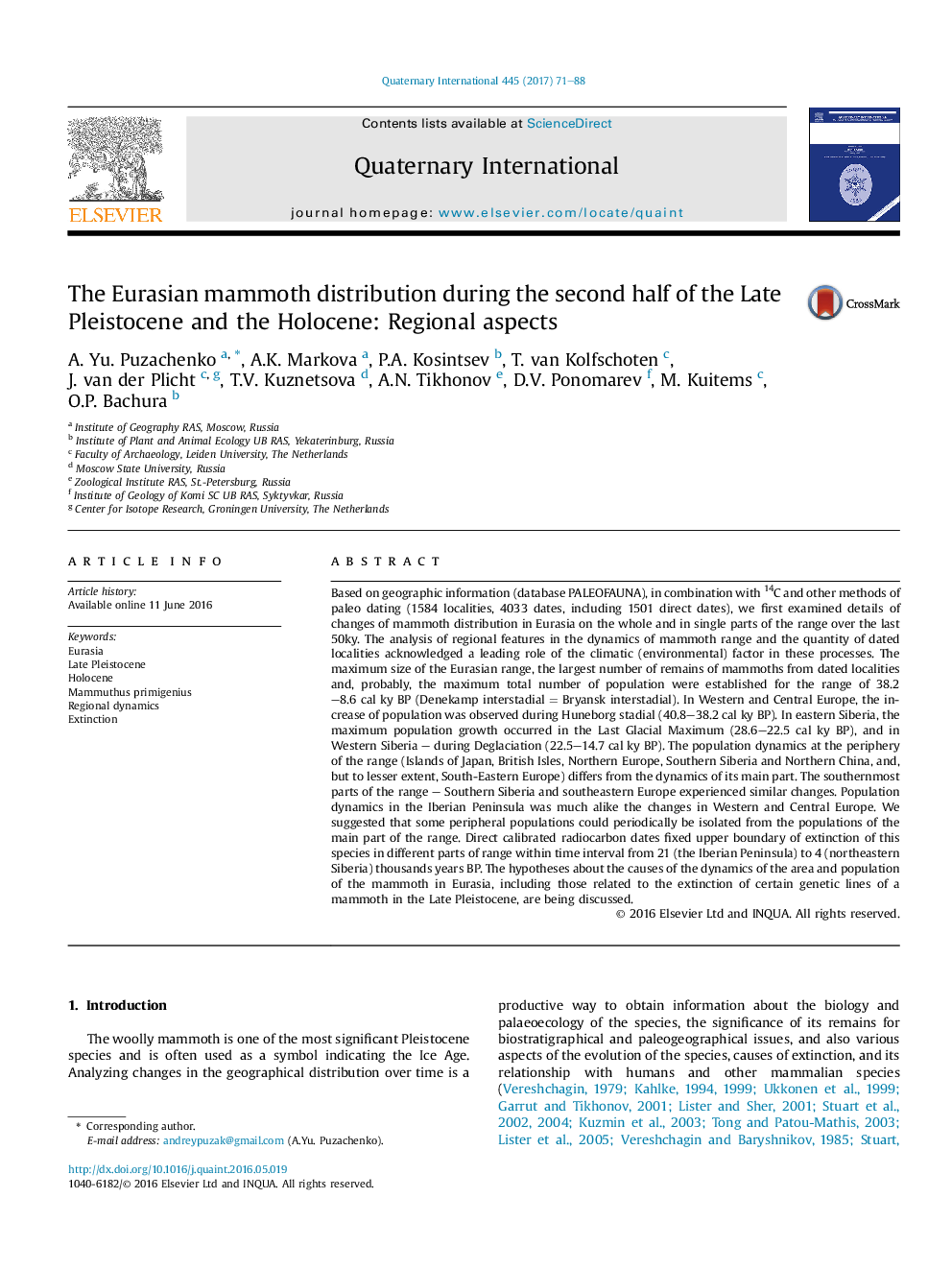| کد مقاله | کد نشریه | سال انتشار | مقاله انگلیسی | نسخه تمام متن |
|---|---|---|---|---|
| 5113225 | 1484078 | 2017 | 18 صفحه PDF | دانلود رایگان |
عنوان انگلیسی مقاله ISI
The Eurasian mammoth distribution during the second half of the Late Pleistocene and the Holocene: Regional aspects
ترجمه فارسی عنوان
توزیع ماموت اوراسیایی در نیمه دوم پیلستوتن پسین و هولوسن: ابعاد منطقه ای
دانلود مقاله + سفارش ترجمه
دانلود مقاله ISI انگلیسی
رایگان برای ایرانیان
کلمات کلیدی
موضوعات مرتبط
مهندسی و علوم پایه
علوم زمین و سیارات
زمین شناسی
چکیده انگلیسی
Based on geographic information (database PALEOFAUNA), in combination with 14C and other methods of paleo dating (1584 localities, 4033 dates, including 1501 direct dates), we first examined details of changes of mammoth distribution in Eurasia on the whole and in single parts of the range over the last 50ky. The analysis of regional features in the dynamics of mammoth range and the quantity of dated localities acknowledged a leading role of the climatic (environmental) factor in these processes. The maximum size of the Eurasian range, the largest number of remains of mammoths from dated localities and, probably, the maximum total number of population were established for the range of 38.2-8.6 cal ky BP (Denekamp interstadial = Bryansk interstadial). In Western and Central Europe, the increase of population was observed during Huneborg stadial (40.8-38.2 cal ky BP). In eastern Siberia, the maximum population growth occurred in the Last Glacial Maximum (28.6-22.5 cal ky BP), and in Western Siberia - during Deglaciation (22.5-14.7 cal ky BP). The population dynamics at the periphery of the range (Islands of Japan, British Isles, Northern Europe, Southern Siberia and Northern China, and, but to lesser extent, South-Eastern Europe) differs from the dynamics of its main part. The southernmost parts of the range - Southern Siberia and southeastern Europe experienced similar changes. Population dynamics in the Iberian Peninsula was much alike the changes in Western and Central Europe. We suggested that some peripheral populations could periodically be isolated from the populations of the main part of the range. Direct calibrated radiocarbon dates fixed upper boundary of extinction of this species in different parts of range within time interval from 21 (the Iberian Peninsula) to 4 (northeastern Siberia) thousands years BP. The hypotheses about the causes of the dynamics of the area and population of the mammoth in Eurasia, including those related to the extinction of certain genetic lines of a mammoth in the Late Pleistocene, are being discussed.
ناشر
Database: Elsevier - ScienceDirect (ساینس دایرکت)
Journal: Quaternary International - Volume 445, 25 July 2017, Pages 71-88
Journal: Quaternary International - Volume 445, 25 July 2017, Pages 71-88
نویسندگان
A. Yu. Puzachenko, A.K. Markova, P.A. Kosintsev, T. van Kolfschoten, J. van der Plicht, T.V. Kuznetsova, A.N. Tikhonov, D.V. Ponomarev, M. Kuitems, O.P. Bachura,
